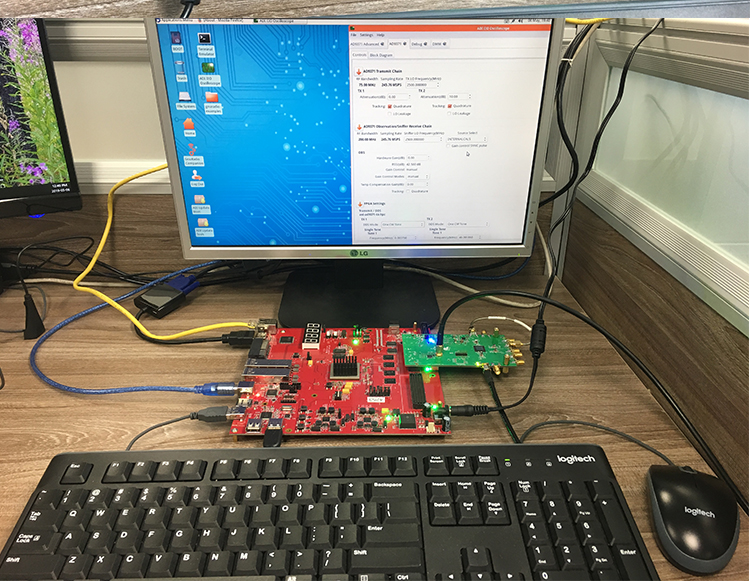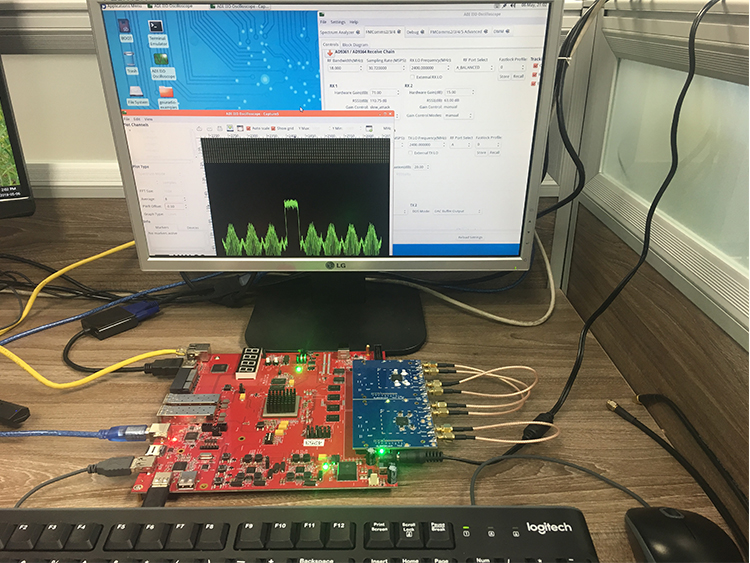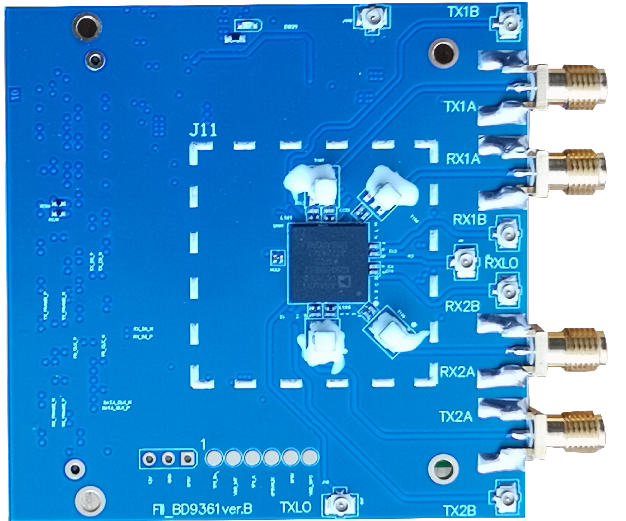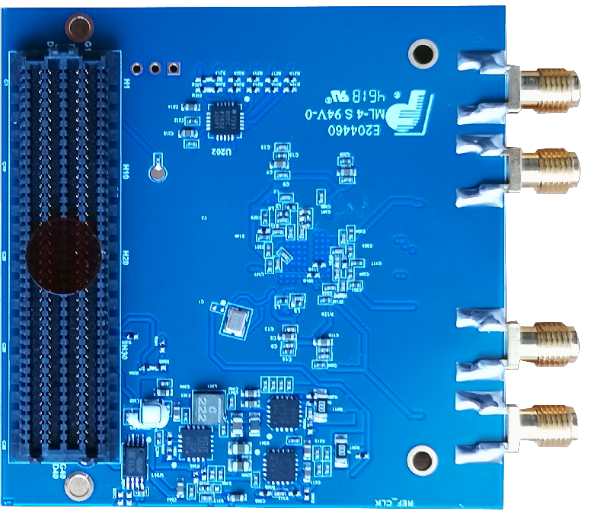USRP Software Radio SDR RISC-V RISCV XC7Z100 SOC -FII-BD7100
Category: AD9361
AD-FMCOMMS3-EBZ Board $379 Compatible FII- BD9361
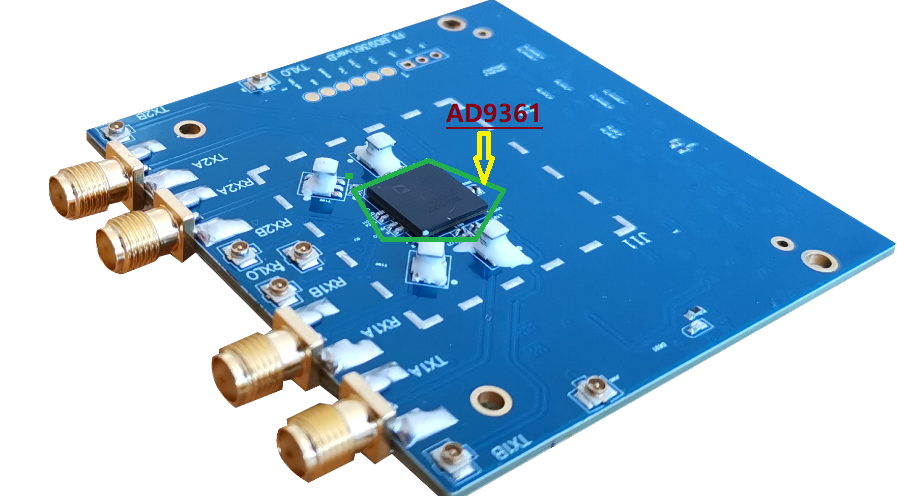
FII-BD9361 – Perfectly compatible with AD-FMCOMMS3-EBZ – Code compatible, development tool compatible, performance compatible, Smaller size and more space saving
– AD9361 Software Development Kit using the AD9361 RF Agile Transceiver
The FII-BD9361 is a high-speed analog module designed to showcase the AD9361, a high performance, highly integrated RF transceiver intended for use in RF applications, such as 3G and 4G base station and test equipment applications, and software defined radios. Its program-ability and wide-band capability make it ideal for a broad range of transceiver applications. The device combines an RF front end with a flexible mixed-signal base-band section and integrated frequency synthesizers, simplifying design-in by providing a configurable digital interface to a processor or FPGA.
The AD9361 chip operates in the 70 MHz to 6 GHz range, covering most licensed and unlicensed bands. The chip supports channel bandwidths from less than 200 kHz to 56 MHz by changing sample rate, digital filters, and decimation, which re all programmable within the AD9361 itself.
Overview
The AD-FMCOMMS2-EBZ is a high-speed analog module designed to showcase the AD9361, a high performance, highly integrated RF transceiver intended for use in RF applications, such as 3G and 4G base station and test equipment applications, and software defined radios. Its programmability and wideband capability make it ideal for a broad range of transceiver applications. The device combines an RF front end with a flexible mixed-signal baseband section and integrated frequency synthesizers, simplifying design-in by providing a configurable digital interface to a processor or FPGA. The AD9361 chip operates in the 70 MHz to 6 GHz range, covering most licensed and unlicensed bands.
The AD-FMCOMMS2-EBZ board comes specifically tuned and optimized to 2.4 GHz and due to the limitations of the on-board discrete external components, it may exhibit diminished RF performance on some other programmed configurations. The chip supports channel bandwidths from less than 200 kHz to 56 MHz by changing sample rate, digital filters, and decimation, all programmable within the AD9361 itself.
The AD-FMCOMMS2-EBZ provides RF engineers the ability to connect the AD9361 to a RF testbench (Vector Signal Analyzer, Signal generator, etc) and measure performance. The external components (which can easily be swapped) on the AD-FMCOMMS2-EBZ have a narrower RF tuning range 2400 – 2500 MHz. It is expected that most engineers will change these external components (pin for pin replacements from various vendors are available) for their specific application/frequency of interest
Key Applications: General purpose design suitable for any software-designed radio application, MIMO radio, Point to point communication systems, Femtocell/picocell/microcell base stations, WiFi, ISM
Features
- Software tunable across wide frequency range (70 MHz to 6.0 GHz) with a channel bandwidth of Phase and frequency synchronization on both transmit and receive pathsAllows high channel density
- Powered from single FMC connector
- Supports MIMO radio, with less than 1 sample sync on both ADC and DAC
- Includes schematics, layout, BOM, HDL, Linux drivers and application software
- Supports add on cards for spectrum specific designs (PA, LNA, etc.)
Ships With
- AD-FMCOMMS2-EBZ Evaluation Board
FII-BD9361 Features and Benefits
-
Software tunable across wide frequency range : TX :47 MHz to 6 GHz RX:70 MHz to 6 GHz
-
Software tunable bandwidth: 200 kHz to 56 MHz.
-
Software tunable TX Power and RX Dynamic Range:TX>80dB RX>70dB
-
Powered up from single standard FMC connector
-
Supports MIMO radio,2 ways TX and 2 ways RX(Max 4T4R by RF Switches configuration)
-
Supports FII-7030 and other standard FMC Connector Platform software radio application
-
TX Power higher, Broadband flatness is better.
II-BD9361 Product Details – Completely Compatible with AD-FMCOMMS3-EBZ Board
-
The FII-BD9361 is a high-speed analog module designed to showcase the AD9361, a high performance, highly integrated RF transceiver intended for use in RF applications, such as 3G and 4G base station and test equipment applications, and software defined radios. Its programmability and wideband capability make it ideal for a broad range of transceiver applications.
-
The device combines an RF front end with a flexible mixed-signal baseband section and integrated frequency synthesizers, simplifying design-in by providing a configurable digital interface to a processor or FPGA. The AD9361 chip operates in the 70 MHz to 6 GHz range, covering most licensed and unlicensed bands. The chip supports channel bandwidths from less than 200 kHz to 56 MHz by changing sample rate, digital filters, and decimation, which are all programmable.
FII-BD9361 Interface:
Digital Interface:FMC-LPC
RF Interface: Four Way Differential Transceiver
FII-BD9361 Features
We support all features of AD-FMCOMMS3-EBZ such as:
TX band: 47 MHz to 6.0 GHz
RX band: 70 MHz to 6.0 GHz
Bandwidth Adjustment Range: 200 kHz to 56 MHz
Low noise figure: 2dB NF(noise figure/800MHz )
LO ,RX Gain Control,AGC
2.4Hhz local oscillator (LO) step
For more information, please check ad9361 introduction.
FII-BD9361 Applications
-
-
- General purpose design for any software-designed radio application
- MIMO radio
- Point to point communication systems
- Femtocell/picocell/microcell base stations
- USRP
- 3G/4G signal and protocol analysis
- WiFi
- ISM
-
3. Compatible Boards
AD-FMCOMMS3-EBZ (FII-BD9361 the same as )
(https://www.analog.com/en/design-center/evaluation-hardware-and-software/evaluation-boards-kits/eval-ad-fmcomms3-ebz.html#eb-overview)
4. Support Boards
ZC702
ZC706
Zedboard
FII-PE7030
5. User Guide : (FII-BD9361 can use it )
https://wiki.analog.com/resources/eval/user-guides/ad-fmcomms3-ebz
FII-BD9361 is developed by Fraser Innovation INC. It is absolutely compatible with AD-FMComms3-EBZ Board. The purpose of the AD-FMComms3-EBZ is to provide an RF platform to software developers, system architects, etc, who want a single platform which operates over a much wider tuning range (70 MHz – 6 GHz). It’s expected that the RF performance of this platform can meet the datasheet specifications at 2.4 GHz, but not at the entire RF tuning range that the board supports (but it will work much better than the AD-FMCOMMS2-EBZ over the complete RF frequency). We will provide typical performance data for the entire range (70 MHz – 6 GHz) which is supported by the platform.
This is primarily for system investigation and bring up of various waveforms from a software team before their custom hardware is complete, where they want to see waveforms, but are not concerned about the last 1dB or 1% EVM of performance.
You can find the user guide in above link at analog website. We will send you hardware configuration and system Scheme Diagram when you purchase this products.
Analog Devices RF Transceiver Evaluation AD-FMCOMMS3-EBZ Board
Evaluation Board for AD9361 Transceiver
The AD-FMCOMMS3-EBZ module is designed to showcase the AD9361 Agile Wideband RF transceiver device. The AD9361 is a high-performance, highly-integrated transceiver intended for use in RF applications, such as 3G/4G base stations and software defined radios. The device combines an RF front end with a flexible mixed-signal baseband section and integrated frequency synthesizers, simplifying design-in by providing a configurable digital interface to a processor or FPGA.
The AD-FMCOMMS3-EBZ is ideal for software developers and system architects who want a single platform to operate over a wide tuning range. The board contains two AD9361 devices and can show how multiple devices may be connected and synchronised.
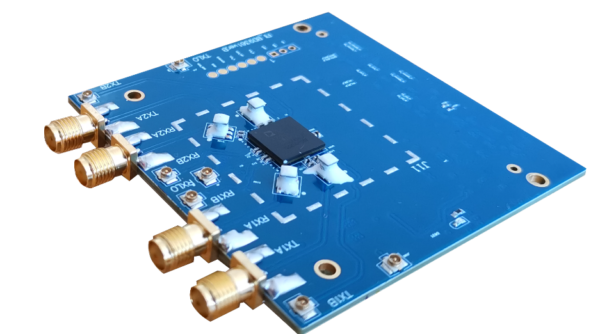
Software-tunable across wide frequency range (70 MHz to 6.0 GHz) with a channel bandwidth of <200 kHz to 56 MHz
Phase and frequency synchronization on both transmit and receive paths
Allows high channel density
Powered from single FMC connector
Supports MIMO radio, with less than 1 sample sync on both ADC and DAC
Includes schematics, layout, BOM, HDL, Linux drivers and application software
Supports add on cards for spectrum specific designs (PA, LNA, etc.)
Applications: Wireless communications demonstration & learning tool, Remote radio head, Software-Defined Radio, Satellite modems, Test & measurement equipment, Radar & advanced imaging, General purpose data acquisition
RS Product Code for Device
877-6421 AD9361 2 x 2 RF Agile Transceivers
Note
The AD-FMCOMMS3-EBZ uses a dual FMC connector, which means a base board will require two adjacent FMC connectors.

AD9361 RF Transceiver™
AD9361 RF Agile Transceiver IC and System on Module (SOM)
Analog Devices’ RF transceiver solutions for communication, radio and base station applications
ADI’s AD9361 radio frequency (RF) Agile Transceiver™ specifically designed for 3G and 4G cellular communication systems such as Femtocell/picocell/microcell base stations. The AD9361BBCZ comes in a 144 pin CSPBGA package and the ADRV9361-Z7035 is a system on module (SOM). The AD-FMCOMMS2-EBZ-FMC board provides designers with a rapid prototyping environment that supports multiple communications protocols, including most licensed and unlicensed bands.
The programming flexibility and configurability of the AD9361 combined with the flexibility of a low-power software configurable radio, and its small footprint enables new levels of design versatility. An equally advanced range of customer ecosystem design support features this technology. It minimizes time-to-market constraints and reduces project risk.
Operating over a frequency range of 70 MHz to 6 GHz, the AD9361 is a complete radio design that combines multiple functions in a single chip. The RF agile transceivers integrate an RF front end, flexible mixed-signal baseband section, frequency synthesizers, two analog-to-digital converters, and two direct conversion receivers to simplify design and reduce bill of material cost.
The AD9361 supports channel bandwidth from less than 200 kHz to 56 MHz, and is highly programmable, offering the widest dynamic range available in the market today. The AD9361 is ideal for communication, radio, and base station applications.
- RF 2 × 2 transceiver with integrated 12-bit DACs and ADCs
- Band: 70 MHz to 6.0 GHz
- Supports TDD and FDD operation
- Tunable channel BW
- Dual receivers: 6 differential or 12 single-ended inputs
- 200 kHz to 56 MHz
- Superior receiver sensitivity with a noise figure < 2.5=””>
- RX gain control
- Real-time monitor and control signals for manual gain
- Independent automatic gain control
- Cellular, LTE
- Current recieving: 175 mA to 445 mA
- Current transmitting: 240 mA to 820 mA
- Temperature operating range: -40°C to +85°C
- Package/case: 144-LFBGA, SOM
AD9361 Product Details
The AD9361 is a high performance, highly integrated radio frequency (RF) Agile Transceiver™ designed for use in 3G and 4G base station applications. Its programmability and wideband capability make it ideal for a broad range of transceiver applications. The device combines a RF front end with a flexible mixed-signal baseband section and integrated frequency synthesizers, simplifying design-in by providing a configurable digital interface to a processor. The AD9361 receiver LO operates from 70 MHz to 6.0 GHz and the transmitter LO operates from 47 MHz to 6.0 GHz range, covering most licensed and unlicensed bands. Channel bandwidths from less than 200 kHz to 56 MHz are supported.
The two independent direct conversion receivers have state-of-the-art noise figure and linearity. Each receive (RX) subsystem includes independent automatic gain control (AGC), dc offset correction, quadrature correction, and digital filtering, thereby eliminating the need for these functions in the digital baseband. The AD9361 also has flexible manual gain modes that can be externally controlled. Two high dynamic range analog-to-digital converters (ADCs) per channel digitize the received I and Q signals and pass them through configurable decimation filters and 128-tap finite impulse response (FIR) filters to produce a 12-bit output signal at the appropriate sample rate.
The transmitters use a direct conversion architecture that achieves high modulation accuracy with ultralow noise. This transmitter design produces a best in class TX error vector magnitude (EVM) of <−40 dB, allowing significant system margin for the external power amplifier (PA) selection. The on-board transmit (TX) power monitor can be used as a power detector, enabling highly accurate TX power measurements.
The fully integrated phase-locked loops (PLLs) provide low power fractional-N frequency synthesis for all receive and transmit channels. Channel isolation, demanded by frequency division duplex (FDD) systems, is integrated into the design. All VCO and loop filter components are integrated. The core of the AD9361 can be powered directly from a 1.3 V regulator. The IC is controlled via a standard 4-wire serial port and four real-time input/output control pins. Comprehensive power-down modes are included to minimize power consumption during normal use. The AD9361 is packaged in a 10 mm × 10 mm, 144-ball chip scale package ball grid array (CSP_BGA).


